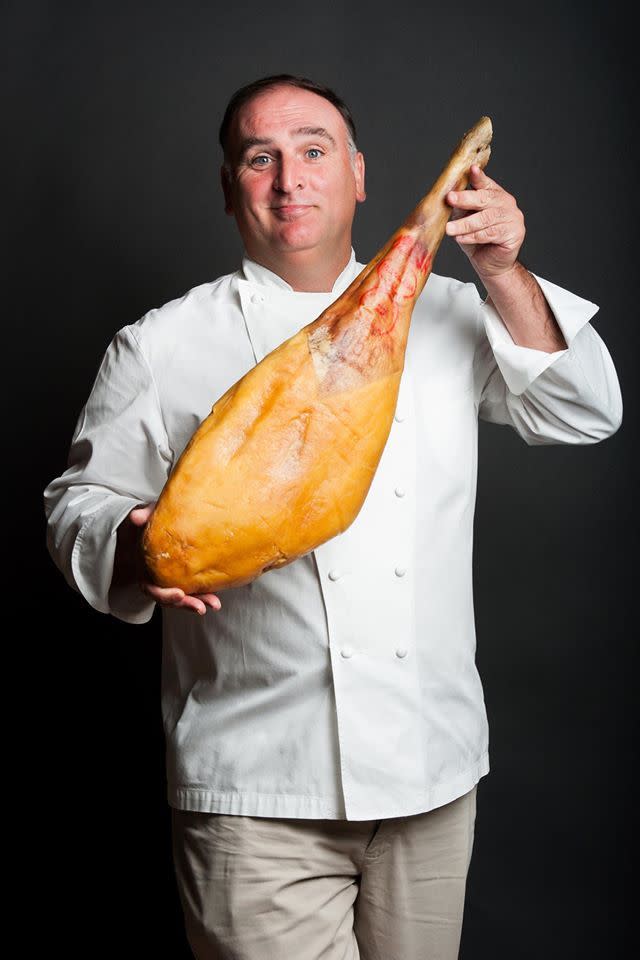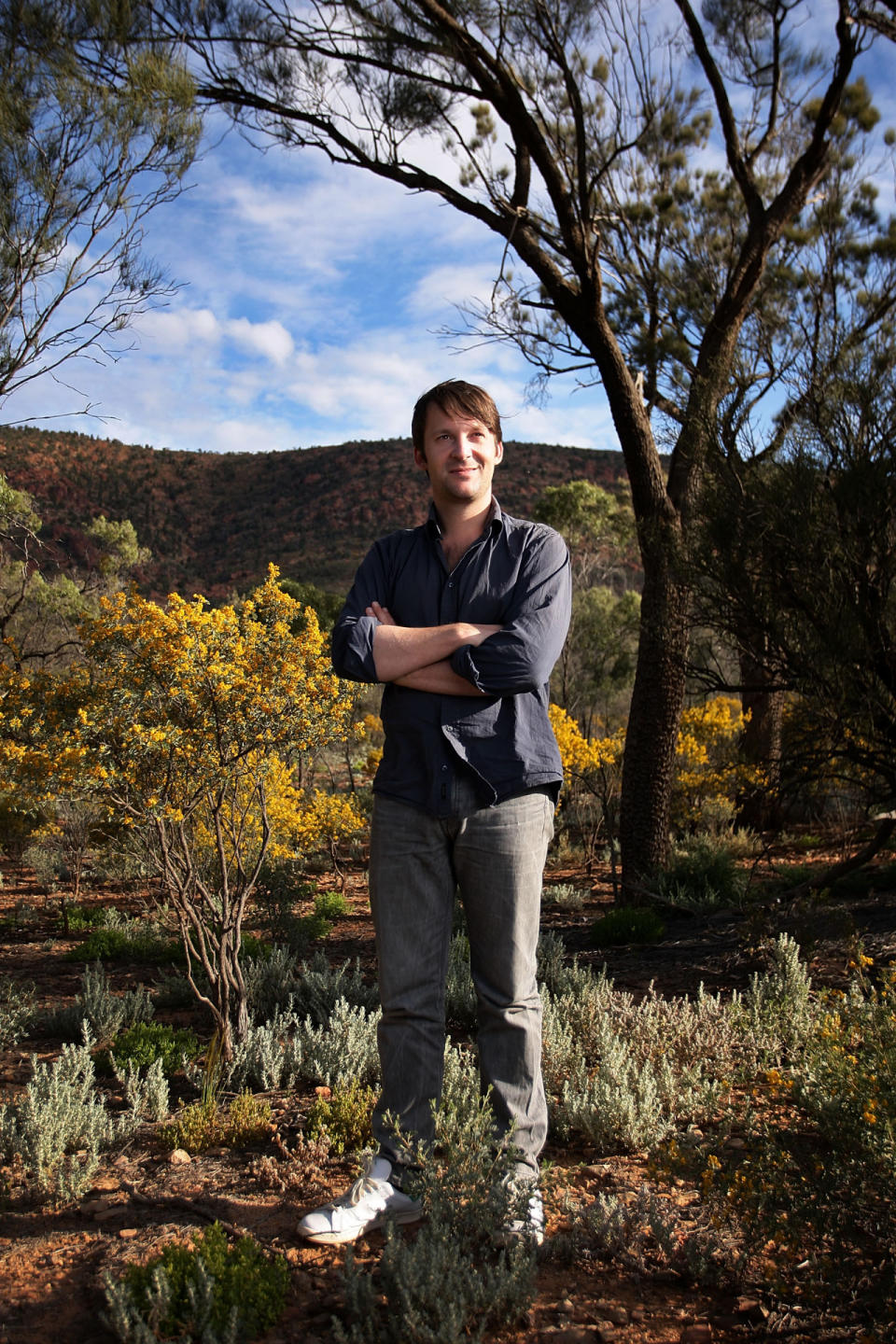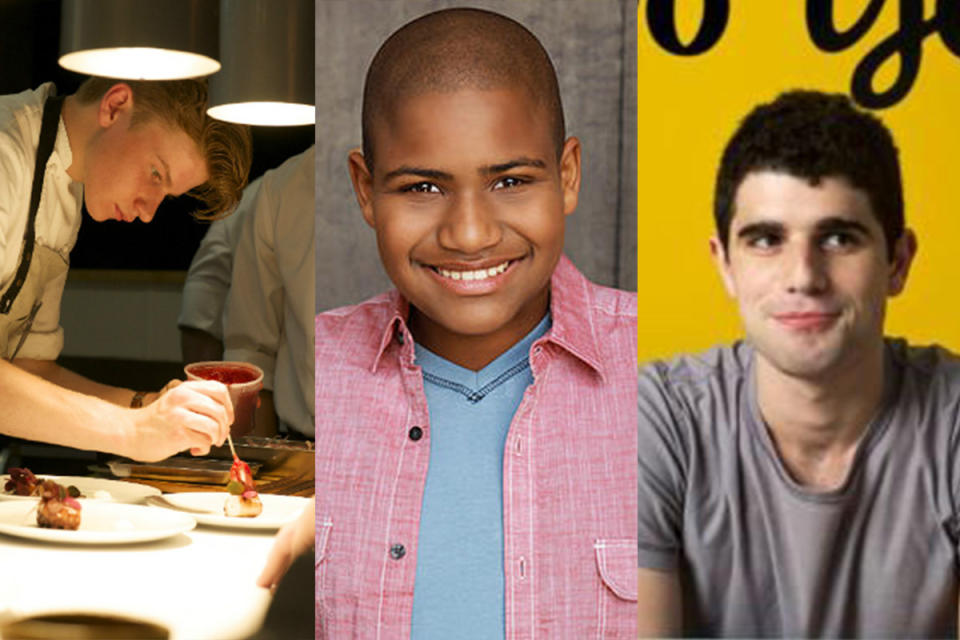The Biggest Food Rebels of 2015
Things won’t be the same in 2016, and it’s a good thing. The food world was rocked this year by culinary rabble-rousers who took a stand against the status quo in ways that go far beyond the plate.
These rebels — people who knew the “rules” and intentionally set out to break them — took on daunting challenges, ranging from hunger in the Third World to accessibility to healthy and affordable fare for the underprivileged. Then there were the people who continued to push the boundaries of modernist cuisine and those who simply were unafraid to speak their minds.
Here are our favorite food rebels of 2015. Do you agree with our picks?

(Photo: RidingShotgunLA/Facebook)
Roy Choi
This year, Los Angeles food truck pioneer Roy Choi announced plans to open Loco’l, a fast-food concept specializing in healthy and inventive fare that’s affordably priced. The target clientele? Underserved and underprivileged diners in two hardscrabble California neighborhoods: L.A.’s Watts and San Francisco’s Tenderloin. Even more fascinating, Choi intends for the shops to function as training programs to benefit the communities at large.
It’s a pretty huge departure from restaurant-opening norms for two reasons: High-end chefs often favor glitzy, pricey enterprises, and fast-food operations usually design their menus based on what’s cheap and tasty, not what’s cheap, tasty, and healthy. But Choi, a respected chef with a social conscience, is doing the opposite on both counts. Take, for instance, Loco’l’s signature offering, a satisfying burger featuring a patty that’s 30 percent grain and 70 percent beef, served on a toasted rice bun with charred scallion relish, Jack cheese, and an emulsified sauce of tomatoes, lime juice, and fermented chili paste. The price point will likely be under $5.
Choi summed up his mission best at the food and tech-focused Bite conference in Silicon Valley back in June. “We really do believe that there’s a better way to feed people,” he said.
Related: Roy Choi Unveils a Comic Strip for New Restaurant Loco’l

(Photo: joseandrescocinero/Facebook)
José Andrés
Presidential candidate Donald Trump’s controversial comments about illegal immigrants put José Andrés in an awkward position. The celebrity chef, an immigrant who was born in Spain, had recently inked a deal to open the flagship restaurant in Trump’s soon-to-open Trump International Hotel in Washington, D.C. With millions of dollars on the line, Andrés made a tough call: He pulled out of the deal and broke his contract.
“The perception that Mr. Trump’s statements were anti-Hispanic made it very difficult to recruit appropriate staff for a Hispanic restaurant, to attract the requisite number of Hispanic food patrons for a profitable enterprise, and to raise capital for what was now an extraordinarily risky Spanish restaurant,” Andrés’s filing reads.
Trump immediately fired back at Andrés with a $10 million breach-of-contract suit, but Andrés didn’t back down. In fact, he countersued for $8 million in October. Talk about a ballsy move.
And if that isn’t enough to secure Andrés’s rebel status, consider his tremendous humanitarian work: This year, Andrés doubled down on his dedication to bringing clean, solar-powered cookstoves to developing countries. “The clean cookstoves we are introducing are not just feeding people. In Haiti, when people use clean cooking fuels instead of firewood, they’re saving their forests, and therefore their farming and fishing industries,” he told Vice in May.
Related: Chef José Andrés’s Op-Ed Has Us Reaching for the Tissues

(Photo: Getty Images)
René Redzepi
In September, famed modernist chef René Redzepi made a startling announcement. Following a final service on New Year’s Eve, Redzepi plans to shutter his groundbreaking Copenhagen restaurant, Noma, one of the world’s best and most influential restaurants, and reopen it in 2017 as an urban farm.
What could possibly compel Redzepi to alter his already successful, profitable, and wildly lauded restaurant? The drive to push boundaries even further.
“Of course we could just keep continuing, just stay put and do what we do there,” Redzepi told the New York Times. “But I genuinely think that we won’t progress.”
To better understand the mind of Redzepi, the new documentary Noma, My Perfect Storm pulls back the curtain on Noma and Redzepi himself. “Over the last four years, [director Pierre Deschamps] was a witness to some of my happiest and most difficult professional moments,” Redzepi said in a quote on the film’s website. “I am happy that Noma, My Perfect Storm shows these in a way that is both honest and profound, I have never seen a film about a chef like this before.”
Related: How Noma Became the Most Influential Restaurant in the World

(Photo: Courtesy of Mimi Sheraton)
Mimi Sheraton
As she approaches 90, former New York Times food critic Mimi Sheraton is still going strong. And that’s putting it lightly. In 2015, Sheraton released her 16th book — yes, 16th — titled 1,000 Foods to Eat Before You Die: A Food Lover’s Life List.
The 1,008-page autobiographical catalog, which breaks down Sheraton’s most memorable meals from her illustrious, food-filled past, took her two years to write. It contains recipes for everything from apple pie with Cheddar cheese crust to boeuf Bourguignon, and hopscotches the globe to create what Sheraton calls a “geography of flavor.”
Never one to hold her tongue, Sheraton also made news this year with some pointed Twitter posts, which only served to endear her more to fans. Some gems include a shot at Mark Bittman following his departure from the New York Times (”How many times is the Times going to let Mark Bittman say goodbye in self-advertisements and plugs for Purple Carrot? Good-bye already!”), a takedown of whiny chefs (“When will chefs&restaurateurs learn to shut up re:negative reviews? They can’t win nor have last word.Suck it up.Makes critic a hero.”), and a succinct review of legendary steakhouse Peter Luger (”Back to Peter Luger for lunch after some 20 yr.absence. Stilll maybe most overrated restaurant in USA. Still jammed midweek. Details follow.”).
Related: Pigeons and Italian Soup: Mimi Sheraton’s Worst Thanksgiving Ever

(Photos, from left: Courtesy of Flynn McGarry; courtesy of Chase Bailey; courtesy of Polpo Gelato)
Millennial chefs
Flynn McGarry. Chase Bailey. Harrison Geller. All three are still in their teens, but are already making headlines with their imaginative cuisine.
Perhaps most famous is McGarry, the 16-year-old wunderkind who opened his first restaurant, Eureka, in New York City in September. The menu, which features dishes like foie gras-topped peanut Ritz crackers and sea-water-brined sea urchin with carrot cremeux and coffee-pickled carrots, has turned more than a few heads. Responding to critics, some of whom take issue with his early success, McGarry told Grub Street, “The person at the front is always going to be hated. So I’ve just kind of accepted that and understood that, as long as people come and enjoy my food, the rest of it really doesn’t matter.”
Then there’s 17-year-old Harrison Geller, who opened his own pop-up gelato shop over the summer in New York City. “I don’t have an industrial-sized gelato maker, so the process is really personal for me, as I hand-churn each batch and know every ingredient that goes in there,” Geller told Yahoo Food. Flavors ranged from classic pistachio to exotic spicy celery sorbet, which earned Geller a noted following. “I don’t think they expected me to execute things on the scale that I did,” he said. “But I figured if I was going to do this, I should go all the way. I wanted things to be as close to perfect as I could.”
Related: Millennial Eating Habits That You and Your Friends Totally Understand
Of course, any conversation about millennial chefs would be incomplete without mention of 13-year-old Chase Bailey, an autistic teen whose obsession with shows like the Cooking Channel’s Eat St. and Food Network’s Chopped not only helped him overcome major food aversions, but also inspired him to become a cooking sensation.
Bailey wouldn’t touch most foods before watching the shows, but afterward began experimenting in the kitchen. His palate quickly opened up, and soon he wanted to emulate his TV chef idols. With a home camcorder, Bailey and his mother recorded the first episode of Chase ’N Yur Face and uploaded it to YouTube. The show caught on, and before long, Bailey was being invited to whip up ramen noodles with fellow food rebel Roy Choi and concoct butternut squash soup with Sting’s daughter, Fuschia Sumner. He even baked cookies for guests at an Autism Speaks gala in Los Angeles, where he was introduced by Conan O’Brien.
If these aren’t delicious rebellions, we don’t know what is.
Other food world luminaries who inspired us this year:
Inside the Mind of a Master Cookie Artist
After Rehab, an Addict Finds New Life in the Kitchen
After Breast Cancer Diagnosis, a Baking Blogger Uses Cake to Tell Her Story

